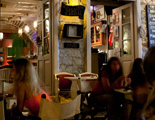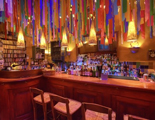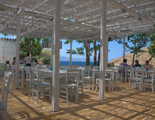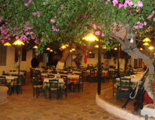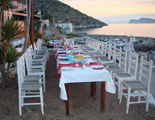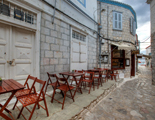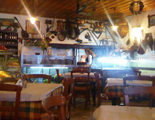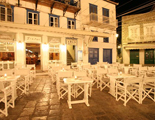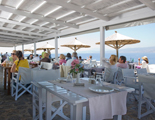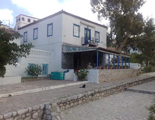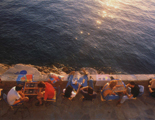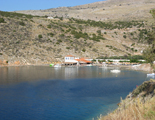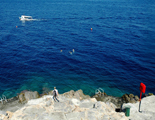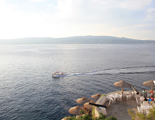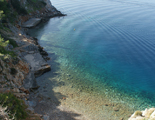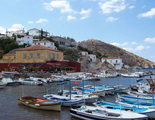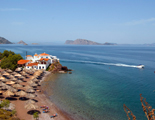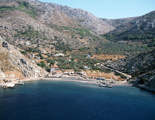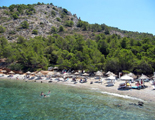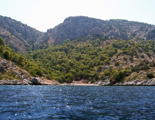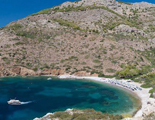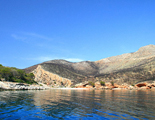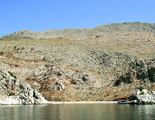 Hydra Travel Guide
Hydra Travel Guide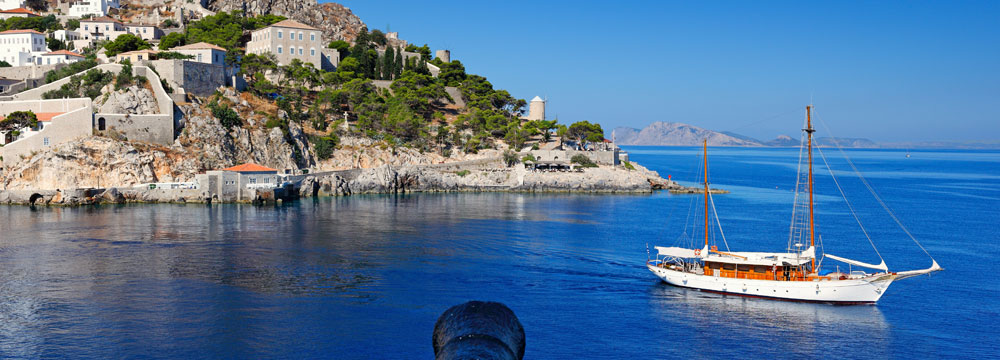
The island took the name “Hydra” due to the abundant fresh water springs in ancient times when the island was actually called “Hydrea” deriving from the ancient Greek word for “water”.
Some archaeological findings indicate that the island was first inhabited during the late Neolithic period (3000-2600 BC). Later, around the 13th century BC the Dryopes an ancient pre-Hellenic race arrived at the island and then about 200 years later the Dorians took over the island. Some findings indicate that there is a possibility the island was under the rule of the King of Mycenae due to its position between the Peloponnese and Attica. During the 17th century the island found itself under the rule of Venice and from the 18th century until the Greek Revolution it was part of the Ottoman Empire.
Hydra started growing significantly around the 15th century when Arvanite families (a clan deriving from Albanians) from the Peloponnese, persecuted by the Ottomans found refuge and settled on the island. It is around then that the town of Hydra was built. Towards the end of the 16th century more Greek and Arvanite families from other parts of Greece settled on the island; these families later on became well known for their connections with the Greek Revolution. The island’s naval and commercial development started around then and the first school for mariners was built in 1645.
At the time of the Revolution, Hydra was already a very wealthy island due to its commercial fleet which got involved in the Napoleonic Wars carrying wheat. The island was able to contribute to the Greek cause 130 battleships that had a capacity of 5400 men and 2400 cannons. This fleet dominated the seas and greatly contributed to the liberation of parts of Greece from the Ottoman Empire.
What is unfortunate is the fact that after helping liberate Greece from the Ottoman Empire the island slowly but steadily fell into a decline and was never able to regain the glory of its past.
On the other hand five Prime Ministers, i.e. Giorgos Kountouriotis, Antonis Kriezis, Dimitrios Voulgaris, Athanasios Miaoulis and Petros Voulgaris and one President of the Greek Republic i.e. Pavlos Kountouriotis came from the island of Hydra.
The island has been a favourite destination for Greeks and foreigners for the last decades and holds strong connections with fine arts more than any other Greek island as various famous artists, like Pablo Picasso and Marc Chagall, had visited and had been inspired by it. Besides, a branch of the School of Fine Arts has been operating on Hydra since 1936, housed in the mansion of E.Tobazis and X.Sachini.
In a very odd way, compared to other parts of Greece, the island of Hydra is not associated with any myths.
The Ecclesiastical Byzantine Museum can be found in the Cathedral. Known as the “monastery” it was built in the mid-17th century. The visitor can admire vestments, relics, pictures and tributes of the 18th century mainly. Among them stands the image of the Virgin Mary “Rodo Amaranto” dated about 1774.
Opening hours
April - November 15th > Tuesday - Sunday, 10.00 a.m. - 5.00 p.m.
Information
Tel.: +30 22980 54071
The Hydra Museum of Historical Archives (ΙΑΜΥ) was founded in 1918. The building where it was housed was given to the state by Gikas N. Koulouris. The mayor of the island at that time, Anthony Lignos, discovered a lot of the material of these archives in the monastery of the Virgin Mary. In 1972 the old building was demolished and a new one was built in its place. It officially opened its doors in 1996 and is open every day. The islanders consider this museum a real treasure of the history of the island!
On the west side of the port, on a hillside full of pine trees, stands the house of Pavlos Kountouriotis. In 1991 it was bought by the Ministry of Culture and made into a museum honouring the Kountouriotis’ family and the post-Byzantine art and history of Hydra. The House is open to the public.
Information
Tel.: +30 22980 52245
This building is a typical example of Hydra’s 18th and 19th century architecture and it can be seen when one enters the port. In 1979 Pantelis Kountouriotis donated it to the state and the state then allowed it to be used by the Historical and Ethnological Society of Greece. Nowadays it is part of the National Historical Museum and, naturally, it is open to the public.
Information
Tel.: +30 22980 52421
The School of Agios (St.) Vassilis was founded in 1749. In 1800 it served as a Naval School. Before the Greek Revolution teachers from abroad, mainly from Italy and Portugal, worked here and spread the naval technique and theory. Part of the curriculum was a variety of languages.
In 1927 a private Maritime Academy was founded and in 1930 the building operated as Merchant Marine School, since it became part of the higher technical and theoretical education. It was housed in a building donated by An. Tsamados and Ath. Koulouris. During the 2nd World War the Naval School of Hydra moved to Athens and Piraeus until 1948. Its training ships were "Saint George", the "Electra" and "Eugene Eugenides".
Since 1989 the alternating education was applied, with a total of 2.800 captain graduates. Nowadays these schools have been removed from the Greek educational system.
The Nunnery of Agia (St.) Efpraxia, surrounded by pine and cypress trees, was built in 1865 at a high altitude so the visitor can enjoy a spectacular view.
This monastery was built in 1813. To reach it one goes through a beautiful pine forest. During the Greek Revolution it served as a prison and place of exile for Theodoros Kolokotronis, one of the leaders of the Revolution, and other chieftains. The library with many manuscripts and books is worthwhile a visit.
Within a short distance of the monastery lies the highest mountain of Hydra, Eros, with an altitude of 588. This point offers a panoramic view of the island and the islands of the Argosaronic Gulf.
The monastery is located in Limnioniza, whose date of built remains unknown. The architect followed the byzantine style with an octagonal dome. During the Greek Revolution it was at its heyday but as time went by, it was eventually closed when the last monk passed away. Now, with the blessings of the Greek Orthodox Church and after going through full renovation, it operates as a nunnery.
This church was built in 1780 and its temple belongs to the Holy Cathedral of Assumption. It is considered one of the most historic churches of the island.
The monastery lies on the east coast of Hydra and towards the Argosaronic Gulf. To get there you need to take a sea taxi from the town of Hydra. After 35-40 minutes you will reach the port of Lediza which is near the monastery. The whole journey from where the sea taxi will drop the visitor off to the monastery is uphill and takes about 40-45 minutes. The view from the monastery is very rewarding and will help the visitor forget the difficulties of reaching it.
CLIMATE
Hydra is located opposite the east coast of the Peloponnese and separated from it by a narrow strip of water. Actually the island is located in the Aegean Sea between the Saronic Gulf and the Argolic Gulf; as such it is considered one of the Argosaronic Islands.
Generally the island has a dry climate with mild winters and dry warm summers. Although the island owes its name to the many fresh water springs it had in ancient times, it is now almost arid.
TELEPHONE
The national prefix for Greece is +30 if you are calling from abroad. All numbers in the capital Athens start with the prefix 210 and are followed by 7 digits (e.g. 210-3227400).
The Area Code for Hydra is: +30 22980.
If you wish to call abroad, you have to start by dialling the other country’s national prefix (i.e. 0049 for Germany, 0044 for England etc.) and continue with the area code and the number where you wish to call.
CURRENCY
Euro €
Euro Coins: 1 and 2 euro coins (gold and silver colour), 10, 20 and 50 cents (gold colour) 1, 2 and 5 cents (copper colour)
1 euro = 100 cents / centimes.
Euro Bank Notes: Are available in 5, 10, 20, 50, 100, 200 and 500. It is not always easy to receive change for 200 and 500 Euro Notes.
BY BOAT
The island of Hydra can only be reached by boat. Either the visitor takes a hydrofoil from the port of Piraeus with the whole journey lasting just an hour and a half or by driving for about two and a half hours down to Metochi settlement located on the east coast of the Peloponnese, leaving the car in a parking area and then taking either a ferry (Information Hydra Lines: 6947325263 FAX: 22980-52961) or a sea taxi (Information: 22980-53690) across or by using one’s own private boat.
Hellenic Seaways Flying Dolphins:
For accurate timetables and ticket costs visit: http://www.hellenicseaways.gr
Piraeus Tel.: +30 210 4199000
Hydra (Hydreoniki Travel Agency) Tel.: +30 22980 54007, 53812
AEGEAN Flying Dolphins:
Hydra: +30 22980 54180, fax: +30 22980 54185
Piraeus: +30 210 4121654, +30 210 4121647
Hydra Port Authority Tel.: +30 22980 52279
Piraeus Port Authority Tel.: +030 210 4226000, 210 4114005
Hydra offers peace of mind as cars are not allowed on the island, transportation for visitors wanting to reach the beaches consists in either going on foot or by using a small boat (kaiki) or sea taxi. For the visitors who do not prefer sea transportation, there is always the additional solution of using a donkey, which has been established as a traditional transportation means on the island.
LOCAL BOATS
From the port of Hydra local boats are operating routes to the beaches and across to Metochi settlement.
Tel.: +30 22980 53690
In the case you need a bank on Hydra, you will find the Alpha Bank and the National Bank of Greece. All banks provide also ATM services. Note that all credit cards internationally recognized are accepted in most of the island's restaurants, bars & shops.
Banks opening hours:
Monday to Thursday: 8.00 - 14.30
Friday: 8.00 - 14.00
Alpha Bank Tel. +30 22980 54053
National Bank of Greece Tel. +30 22980 52578
MONEY EXCHANGE
Post offices exchange cash, but not traveller’s cheques, and usually charge lower commissions than banks. Travel agencies and larger hotels exchange cash and traveller’s cheques but usually charge a higher commission. Credit cards are accepted in some shops and restaurants, however, in local cafes, especially in villages you will probably have to pay in cash.
POST OFFICE
The Greek post office is called ELTA. Post Boxes in Greece are YELLOW for normal post, usually with 2 slots for INTERNAL POST (meaning inside Greece) and post for ABROAD. RED Post Boxes are rarer and they are used for URGENT mail. REGISTERED mail is always handled and given a receipt for at the POST OFFICE. The local postal code is 84010.
Hydra Post Office Tel.: +30 22980 52262 / 53398
POLICE STATION
Hydra Police Station Tel.: +30 22980 52205
MUNICIPALITY OF HYDRA
Tel.: +30 22980 52210 / 53003
• Tourist Police: 171
• Hellenic National Meteorological service: +30 210 9699101-3
• Elpa (Car breakdown tourist information service): 174
• Hydra Port Authority: +30 22980 52279
INTERNATIONAL PRESS
International press can be found in the town of Hydra. If you are looking for something very specific, though, we suggest looking for it in Piraeus or Athens.
EMERGENCY NUMBERS
• Police: 100
• Fire Department: 199
• Ambulance: 166
HEALTH
Hydra Hospital Tel.: +30 22980 53150
Hydra Health Centre Tel.: +30 22980 52420
PHARMACY
Pharmacies are located in the town of Hydra. Pharmacists are well-qualified to deal with the majority of minor medical complaints or to prepare prescriptions. For your convenience, find below an indicative list with pharmacies.
Rafalias Vangelis Tel.: +30 22980 52059
Gavalas Panagiotis Tel.:+30 22980 53260
On the northern coast of the island next to the town to the east, Mandraki beach is located. It is an organized sandy beach with crystal clear waters. Mandraki was actually the old war port of the island but nowadays it is the most organized beach on the island. There is also the option of watersports for those who enjoy water skiing, wind surfing and various others.
Access is very easy on foot, sea taxi of the tourist caiques (small boats).
Just a step away from town to the west, at the end of the jetty at the external side of the harbour, the rocks form Spilia beach. This usually crowded small beach is rocky but planished and cemented to create a flat surface and thus sunbathing is also an option there. Its waters are clear, deep and ideal for plunging. On the top of the rocks, there is a café serving coffee, spirits and light snacks. Due to its location, the access to the beach is a piece of cake!
Hydroneta is a small beach located right next to Spilia beach under the famous canons of Hydra. Hydroneta also features flattened and cemented surfaces that make it appropriate for sunbathing while the deep waters under are just perfect for plunges. By many it is considered the best place on the island and ideal for watching the sunset. Right above the flattened surface operates a small restaurant for indulging sea views. Hydroneta is also very easy to access.
Avlaki is in fact a tiny pebbled beach located next to Hydroneta beach. A part of it is set with concrete to create more space for the visitors to sunbathe. The access is easy from Hydra’s Hora and visitors will only have to descend a number of rocky stairs to the small coast. We suggest, before going to the beach, to check if there is space in the coast as it is really small and usually full with people.
Next to the settlement of Kamini and just twenty minutes away on foot from the harbour of Hydra to the west, we encounter a pair of adjacent small pebbled beaches with light blue clear waters, Megalo and Mikro Kamini. Megalo kamini is the first to find between the settlement’s port and Vlychos beach while Mikro Kamini is right next to it. The beaches are not organized but their shallow waters make it ideal for families with young children. They also provide various accommodation and dining options such as rooms to let and taverns in the settlement right above.
To reach Vlychos you just have to walk the coastal road from Hydra harbour for about 45 minutes or take a kaiki. The settlement consists of traditional white-washed houses and the beach is organized with sunbeds and umbrellas while the grey pebbles create a contrast with the blue sea. You may also try the local cuisine at one of the taverns of the settlement or even stay the night as it offers some accommodation options.
Palamidas beach is located next to Vlychos to the west at about twenty minutes’ walk. On the way the visitor encounters a characteristic arched bridge of the 17th century made of stone. If you prefer a sandy beach with crystal clear blue waters away from crowded places and enjoy tranquillity this is a splendid option. Access is easy by sea or on foot, if you are a hiking lover.
At the westernmost point of the island Bisti beach is located, accessed only by boat. It is surrounded by big rocks and a beautiful pine forest which provides natural shade. The beach is pebbled and organized with sunbeds, umbrellas and it is ideal for watersports too as it offers various such facilities.
At the south-western part of the island we encounter the beach of Agios Georgios which is set between two hills with pine trees. It is a tranquil, non-organized beach and is only accessed by sea so be prepared with supplies and sun protection.
Agios Nikolaos is a coast naturally shaped by the foot of the descending hills at the south-western part of Hydra reached by boats operating routes from the port of Hora. As it is engulfed by those hills, it offers weather protection and calm, shallow waters, making it ideal for families with young children. A totally unorganized cove, leave aside the one umbrella made of straw and a sunbed. Also, a perfect spot for snorkelling due to its calm, transparent waters.
Nisiza is a pebbled beach at the south eastern part of the island where the ancient seaport of the settlement of Episkopi used to be located. This is a not organized secluded place with beautiful waters which used to be surrounded by pine trees before a catastrophic fire that left only a small part of it intact. If you do not prefer following the path from the port of Hydra, a sea taxi could take you there upon request for it is not a regular route.
Limnioniza is a pebbled beach with clear waters at the north eastern coast of the island. The beach is slightly organized with sunbeds, umbrellas and a canteen operating during summertime. It is also ideal for snorkelling. Sea taxis operate routes from the harbour, or you may take the scenic foot path from Hydra.
The island of Hydra does not boast any particular gastronomic tradition but it shares some variations of the traditional Greek dishes in general.
Once on the island the visitor should definitely taste dishes of fresh fish and seafood offered at the local taverns and restaurants.
Travellers should definitely try the traditional marzipans of Hydra which are made of rose water, lemon zest and honey.
Additionally, mind to taste the local wine made by the Monastery of Prophet Elias using sundried grapes to produce it. A sheer delight!
The celebration of Miaoulia is dedicated to the great contribution of Andreas Miaoulis in the Greek Revolution. Miaoulis was born and raised in Hydra and was a very courageous shipowner who, among other achievemnts, led his fleet against the Turkish-Egyptian fleet at the battleship of Gerontas at the island of Kos.
A celebration in his honour is held annually at the end of June lasting two weeks with exhibitions, speeches, acts and concerts. On top of them, though, stands the representation of the battleship and the burning of the Tunisian frigate by Vatikiotis, held at the port entrance accompanied by fireworks. An overwhelming and impressive spectacle although doubts have arisen on whether this was an actual, historic fact. Nevertheless, it has passed in the island’s tradition and it is a delight for all of those that are lucky to visit the island at that time of the year.
Every year around the 22nd of August the celebration in the memory of Admiral Pavlos Kountouriotis is held, a hero of the Balkan Wars who achieved two major victories on his flagship “Georgios Averof”; in December 1912 (Battle of Elli) and in January 1913 (Battle of Limnos) and liberated many Aegean islands from the Turks. He was elected Regent of Greece in 1920 and in 1924 the first President of the Greek Republic.
The six day programme includes speeches, projections, exhibitions and athletic events.
Easter on Hydra island is a unique experience bound to tradition and attracts many visitors every year, mostly Greeks who are very well aware of the festivities. On Good Friday, at the district of Kamini, you would witness the procession of the Epitaph which, apart from going around the nearby alleys, it is also driven into the sea by the men who carry it with the aim to bless the waters in favour of the seamen so that they have a safe journey back home. On Easter day the tradition dictates a dummy of Judas suspended by a rope and set on fire after being shot by the local’s weapons.
Since the beaches of Hydra are accessible only by boat or through paths, you should be prepared with suitable clothing and shoes. Especially when visiting not organized beaches, water and a snack supplies should prove to be a really good idea.
The sun is very strong in summer and especially in August. Try to avoid the direct exposure for extended periods of time, especially from 11.00 to 16.00. Additionally, you should use a high factor sun cream or oil during your stay on the beach while a hat and sunglasses are also very helpful.
As Hydra is a small island with no roads and vehicles’ traffic, it would be advisable to take a nice stroll through its graphic alleys, during early afternoon, and really flavour the essence and unique atmosphere of this beautiful island so near Athens.
Tsagkaris Pastry Shop
One of the most popular and traditional sweet shops in Hydra since 1930 famous mostly for its marzipans.
Hydra beach,
Hydra, Greece
Tel: +30 22980 52314
Miranda Art gallery
A traditional Hydra house has been transformed to a charming hotel whose part operates as an art gallery hosting high-quality works of various artists each year.
Hydra Port,
Hydra, Greece
Tel: +30 22980 52230 / 53953

 Print this page
Print this page